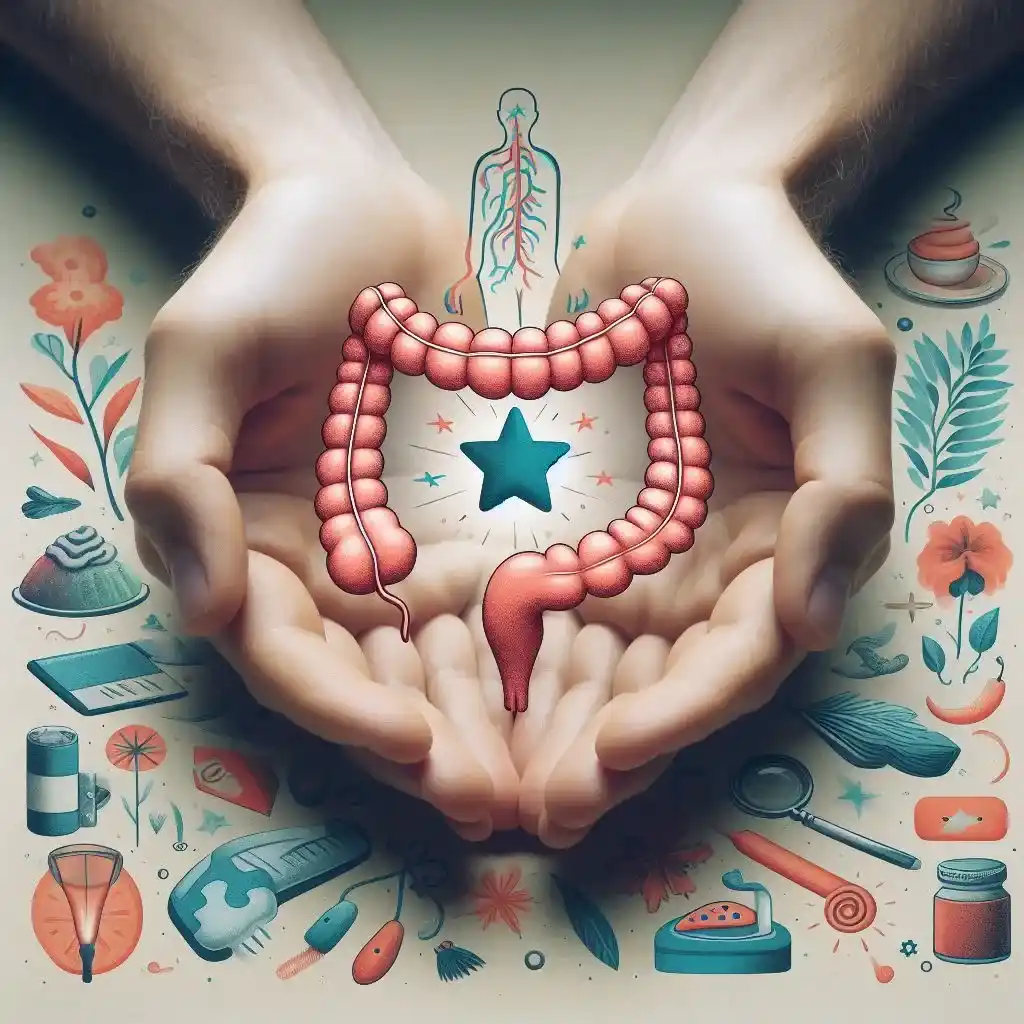The particular type of IBD (Inflammatory bowel disease (IBD) is a term used to describe conditions that cause severe tummy pain and diarrhea) that has an impact on the colon is referred to as UC (ulcerative colitis) due to its ability to cause inflammation of the colonic lining and the rectum. It results in inflammation and formation of ulcers commonly referred to as soars in the tract causing discomfort and several other symptoms. UC differs from other types of IBD like Crohn’s because UC affects only the colon and rectum. However, the intensity and area of inflammation differ between people.
Conditions such as ulcerative colitis that fall under inflammatory bowel diseases are well-known health concerns affecting millions of individuals worldwide. It is therefore important for the patient and or caregivers to know this condition as this forms the basis for managing the condition and improving the quality of life of the patients.
Understanding the Anatomy of the Colon
The colon, also known as the large intestine, is the part of the digestive system that acts to the absorption of water and salts in foods that were previously digested in the small intestine. It also includes and regulates the storage of waste material and its means of evacuation. In patients with ulcerative colitis, these functions are interfered by inflammation thus exhibiting signs like diarrhea, abdominal pain, and rectal bleeding.
When the lining of the colon becomes damaged by the inflammatory condition of ulcerative colitis, it is not able anymore to carry out all its functions effectively, which gives symptoms of the disease. Although the specifics of this inflammation are not well understood, this is attributed to an abnormal functioning of immunity.
Epidemiology and Prevalence
Ulcerative colitis is reported to occur in every population around the world with the difference in the frequency rates pegged on region, race, or even lifestyle. It is prevalent in the developed countries of Europe and North America, but the cases are on the rise in Asia and other parts of the world.
There are conditions known to reduce an individual’s odds of developing cataracts; however, there are also those that increase risk – these factors include a family history of the disease and Ashkenazi Jewish ancestry. Secondly, UC mainly affects people of, the age of thirty–five though it can affect all ages of people.
Symptoms of Ulcerative Colitis
The symptoms of ulcerative colitis are non-specific and can range from the mildest of forms to the severest and the symptom’s time of onset also varies. There is often straining and frequent passage of stools which is usually foul, containing blood orpus. Other signs may be loss of weight, weakness, nausea, vomiting, and at times, anemia resulting from loss of blood.
In more severe cases, complications can emerge, for example, the patient may suffer from severe dehydration, severe forms of malnutrition, or can get colon cancer. One has to ensure that the developments of the conditions are detected early and this will help in preventing or reliving the conditions to their worst.
Causes and Risk Factors of Ulcerative Colitis
The precise cause of ulcerative colitis remains undetermined; however, several factors are considered to play a role in the development of the condition. The following factors act as significant risk factors in the development of the condition; The genetic aspect of the condition exhibits a higher risk if there is an FH or IBD (Inflammatory bowel disease). Lifestyle factors like the kind of foods consumed, and pollution, amongst other factors, can also cause the disease or the worsening of diseases.
The other important parameter is the immune system. Another example in humans is related to ulcerative colitis where the immune system of the person becomes pathologically inflamed with the cells of the colon. It is not completely understood how this immune response might be activated, in response to an infection or other stimuli in the environment.
Diagnosis of Ulcerative Colitis
Identifying the condition of ulcerative colitis requires the doctor’s knowledge of the patient’s medical history, the clinical assessment of the patient, and several investigations. Usually, doctors start with a discussion of a patient’s complaints and examine a patient’s body. Non-inflammatory tests may include a blood test, Imaging test, and Stool test, to help clinch a diagnosis out of the existence or absence of inflammation.
X-ray of the colon, CT scan, and MRI may be done to visualize the extent of the inflammatory process. The best diagnostic test though, is an endoscopy that involves using a camera in performing a colonoscopy or a proctoscopy depending on the location of the issue. Sometimes, sample tissue(s) may be removed (biopsy) during a colonoscopy for further examination.
Complications of Ulcerative Colitis
The disease ought to be managed effectively because otherwise, it will result in different complications. The short-term possible complications include extensive hemorrhage, water deficit, and inflammation that is likely to cause an infection. Long-term side effects are much more severe sometimes they are life-threatening such as an increased risk of colon cancer particularly in severe or long-term illnesses.
Other possible complications include toxic megacolon in which the colon distends and becomes at risk of perforation. This is a medical emergency, hence, should be treated as such, it requires the attention of a doctor or a surgeon.
Management and Treatment Options
The treatment of ulcerative colitis is mostly medical however, it always requires dietary modifications and at times surgical intervention. The generally embraced objective of managing patients with SLE (Systemic Lupus Erythematosus) is to optimize the inflammatory state, to control the end organ manifestations, and to induce medication-induced remission.
The previous steps of treatment include medications that are anti-inflammatory drugs and immunosuppressants, as well as biological therapies. For patients who fail to respond to medication or worsening of their status, surgery is likely to be performed. Also, complementary medicine and modifications in the diet may be useful in the treatment and management of the disease.
Medications for Ulcerative Colitis
The drugs used in the treatment of ulcerative colitis are classified into various categories depending on the disease aspect they address. Medications used to manage inflammation include aminosalicylates and corticosteroids, which are prescribed for people with a flare-ups. Immunosuppressants are taken to lower the activity of the immune system and prevent it from sending its troops into the colon to attack.
Biologic therapies, which are relatively newer kinds of treatment, work more at the protein level of the inflammation cascade. These medications have the potential for considerable control of moderate to severe ulcerative colitis. They are typically limited to those who fail the therapies that are usually administered to patients.
Surgical Interventions
In certain situations, drugs and other standard procedures are unavailable or unable to produce the required results and at this stage, surgery is done. A colectomy is the most frequently used surgery for ulcerative colitis, in which the colon is removed. It often can be curative since the disease is localized in the colon.
Surgical management options are done through total proctocolectomy with ileal pouch-anal anastomosis (IPAA) and total proctocolectomy with end ileostomy. It is important to establish several elements to determine the kind of surgery to be done; they include the stage of the disease as well as the general health of the patient.
Dietary Management for Ulcerative Colitis
It is also essential to regulate the diet, especially for those with ulcerative colitis since it is a determinant of the flare-ups. In that sense, although no diet is known to have a direct therapeutic effect on the condition, some foods may aggravate it or alleviate its effects. Certain foods should be avoided, these are; foods rich in fiber during flare-ups, dairy products, spicy foods, and alcohol.
There may be a need to prescribe supplements to some patients for example patients with malabsorption problems. Patients can consult a dietitian and receive a diet plan that will allow them to enjoy proper general health and reduce the intensity of the discomfort.
Lifestyle Changes and Coping Strategies
Most patients with UC deal with multiple changes in their daily routine due to their situation. It is possible to protect the skin from flare-ups during treatment by practicing stress management. It also helps to engage in such activities as mindfulness, meditation, and yoga to the extent that one will experience benefits. Practical activities which according to one’s capacity also help in enhancing health standards and minimizing stress.
Counseling is also another area of managing the condition as the patients learn to live with ulcerative colitis. Living with a chronic disease does affect one’s mental health and getting a counselor or getting into a support group is very helpful.
Living with Ulcerative Colitis
When it comes to UC, daily living may not be easy but with the correct management techniques; the patients are capable of a good quality life. Patients must be able to make modifications to their workplace, for instance, to be able to get access to the washroom easily or be allowed to work on a flexible shift during the episodes.
Family, friends, and physicians act as someone’s support framework to help them cope with the illness. Furthermore, forums of fellows with the same diseases or issues enable people to share experiences and advice and local support groups.
Impact of Ulcerative Colitis on Quality of Life
Thus, the given condition along with the medical name, ulcerative colitis, can indeed negatively influence a person’s quality of life, in political and emotional aspects. Depression, pain, exhaustion, and the constantly unpredictable nature of women with the ailment are rather frustration-provoking. This fear also hinders the interaction of the patients with other people and affects the quality of their lives negatively.
However, if the condition is managed, most individuals with UC can have relapse-free intervals and a healthy, peaceful lifestyle. Discoveries in the health sector on how the sickness can be treated and comprehended have put a fine line to reform the lives of all the patients who are infected.
Ulcerative Colitis in Children and Adolescents
It concerns that ulcerative colitis can be affected around children and adolescents although it is more common in adults. The manifestations in children are similar to those in adults, though with certain peculiarities: due to lurking diseases, children of a certain age may not grow and develop as their peers.
When children are diagnosed with ulcerative colitis, certain aspects should be taken into consideration; they are the effects of the medications for ulcerative colitis on the growth of children and their schooling. It is an approach that which pediatric specialists liaise with the families of the patients to devise the most appropriate care management.
Latest Research and Future Directions
There is current research on ulcerative colitis to find new ways of treating the disease and the possibility of finding a cure. Recent innovations in genetics have enhanced the perception of the disease hence creating methods of developing drugs that avert the symptoms more. ’
Stem cell therapy, gene therapy, and additional forms of what can be categorized under the label ‘‘next generation agents’’ can give hope to people who did not experience recovery with traditional medicine. Currently, there is no cure for the disease but in the future, this seems to be becoming a possibility as more and more advances are made.
Conclusion
Thus, ulcerative colitis is a difficult disease that needs proper control and continuous intervention. Thus, knowing the signs, causes, and ways to treat the illness, ulcerative colitis patients can make some specific lifestyle changes and enhance their condition. About this condition, it can be said that even though the quality of life is significantly diminished in many cases with this condition, further development of research in the field and means of treatment may work as a ray of light for the affected.



